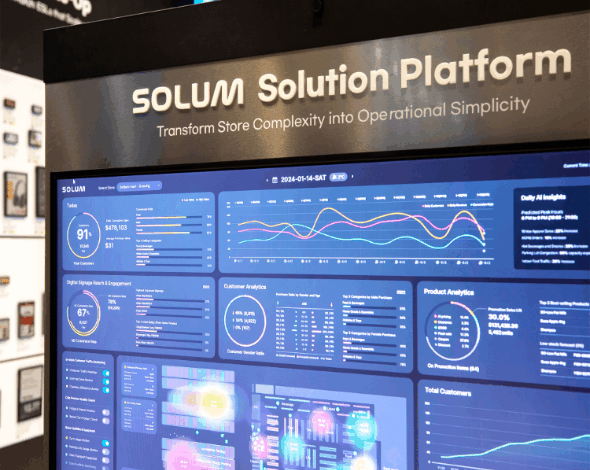
Artificial Intelligence (AI) is driving transformation across every layer of modern industry. From automation to advanced data analytics, AI is simplifying complex operations and delivering actionable insights that are becoming core to enterprise strategy. Supply Chain Management (SCM) is no exception.
Today, over half of manufacturers are applying AI to data analysis, and this trend is rapidly accelerating. As supply chains and retail networks become more complex, AI-powered systems are emerging as critical tools for building agility, sustainability, and resilience.
Real-World Challenges in Supply Chain Management
Supply chains are highly interconnected systems where warehousing, logistics, manufacturing, and store operations all influence each other. When even one element fails—such as a misplaced item or missed shipment—it can lead to increased labor costs, lost revenue, or failed promotions.
Fast-moving consumer goods (FMCG) are especially vulnerable to logistics delays due to short shelf lives. Products that arrive late are often sold at a discount or discarded entirely, and customers who can’t find what they need may turn to alternative products or brands.
It has been found that retailers being out of stock or missing displays of popular products often lead to customer churn. Therefore, accurate demand forecasting and real-time inventory visibility are no longer optional—they are essential to high-performing supply chains.
Extending Smart Retail Technologies to SCM
Originally designed for in-store real-time price display, Electronic Shelf Labels (ESL) are now being expanded to support broader supply chain functions.
BLE Tracker Integration (TRACE Solution)
SOLUM’s TRACE solution uses BLE tags in sticker, coin, or slim formats to track the real-time location of goods and equipment, an example of what global retail tech providers are doing to incorporate automation into their retail solutions. This system enables optimized picking in warehouses and helps avoid misplacement—particularly in cosmetics and drugstore zones where products may look similar.
Responsive Retail with BLE Ward
In an era where data-driven insights define competitive advantage, technology like BLE Ward emerges as an important tool for retailers seeking to enhance experiences for customers. BLE Ward focuses on customer movement inside the store. Operating in a 1–3 meter radius, it collects live behavioral data that allows for enhanced operational strategies:
- Heatmap-driven product placement optimization
Analyse high-traffic zones (hot zones) to position high-margin products strategically or offer paid shelf space to partner brands.
- Retail Media Network (RMN) integration
Link BLE Ward data with digital signage and POS systems to measure ad impressions, dwell time, and conversion rates. When a customer approaches a specific shelf, coupons can be sent to their shopping app based on purchase history.
- Workforce optimization
Predict congestion patterns to adjust staffing shifts and guide traffic flow for smoother in-store experiences.
- Warehouse integration
BLE Ward can be deployed in warehouse sections and racks to track asset movement in real time. Internal testing shows a 30% reduction in inventory loss and a 25% decrease in picking time, contributing to labor cost savings.
BLE Ward not only captures responsive in-store behavior but also extends its functionality to backend warehouse operations, driving end-to-end retail optimization.
Camera-based Shelf Monitoring
Using AI-powered cameras, this type of technology can optimise inventory management, improve customer experience, and reduce operational efficiencies with how advanced it can be. It is usually mounted on store shelves or ceilings, tracking the status of products on shelves in real time. It can detect things like out-of-stock items, incorrect product placement, and pricing label errors, and with AI, it can be analysed through machine learning algorithms to detect product presence and absence.
Retail tech providers offer solutions like the Newton Eye, which successfully detects low inventory and expiring products in real time through ESL integration.
Retail intelligence, all in One Place
Integrated Retail Analytics Platform is a unified technology ecosystem designed to capture, process, analyse, and visual retail data from different sources. A concept that helps with decision-making and providing insights.
It can help businesses make smarter decisions in areas of inventory and supply chain management, customer experience and personalisation as well as pricing optimisation.
It can help deliver better personalisation by targeting the right customer at the right time, as well as helping with real-time decision-making, such as dynamic pricing. As a result, there is improved customer satisfaction with better product availability and faster delivery.
Connected Value from Store to Supply Chain
In hybrid retail models (in-store and fulfillment), ESLs play a pivotal role in tracking sales flow and real-time inventory conditions. This is why many retail technology providers are evolving their ESL technology beyond store-level displays into a data interface that connects supply chains end-to-end
BLE-based tracking improves picking accuracy and staffing allocation. In internal tests, these systems achieved measurable results – 30% reduction in lost inventory and 25% faster picking, delivering significant operational improvements.
Conclusion: The Future of AI-Driven Supply Chains
Technologies like camera-based shelf monitoring and retail analytics platform is how how in-store technologies can transform entire supply chains. These systems do not automate logistics in isolation; they make each part of the supply chain visible, actionable, and intelligent.
As data-driven SCM becomes essential, BLE-based asset tracking and behavioral analytics are opening new frontiers. AI is not just reshaping supply chains, it’s redefining how businesses see and act on their operations. And in the evolving competitive landscape, success will depend not only on the strength of your technology, but on how well it’s connected.





